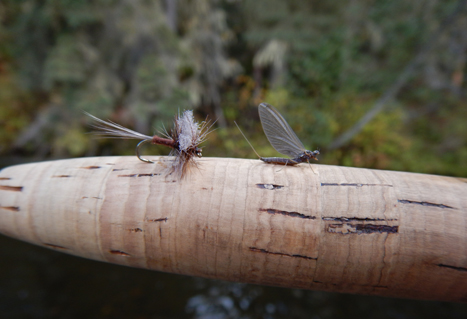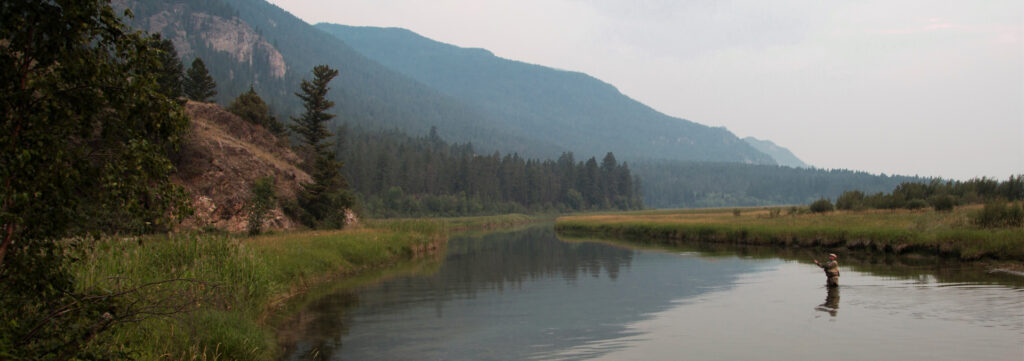After enjoying a great summer of dry-fly fishing on streams, many anglers abandon trout streams and return to fishing lakes. But there are still opportunities to fish dry flies on moving waters late in the season.
When is the late season? Instead of trying to pin it down with a calendar, pay attention to the signs that seasons are changing. Late-season dry-fly fishing starts with cool mornings, and mists drifting over the river. The leaves on trees start changing colour; some may have even fallen. Coinciding with late summer or early fall, it’s a time of the year when no one is expecting to find flying mayflies or caddisflies.
Mahogany Dun
Mayflies hatch predominantly in the spring and summer, but there are always exceptions to the rule. One such mayfly is the mahogany dun, which consists of two different species that hatch at different times: one in the spring, and the second in the late summer. It is this second species that late-season dry-fly anglers target.

As the day warms, you may see a few duns floating on the surface of slower-moving runs in the late afternoon. When it is time to hatch, this mayfly’s dark chocolate-brown nymphs migrate to such runs before swimming to the surface to become duns. At the surface, and needing time to inflate their wings before flying away, the duns can drift long distances. Greedy trout can’t leave these helpless duns alone. To imitate them, tie your dry-fly patterns on size 14 and 16 hooks, with dark brown abdomens and dark dun (dark grey) dry-fly hackles. You can add wings using materials like grey poly yarn.
The hatch of the late-season mahogany dun is not large, but you only need a few of these mayflies floating on the surface to enjoy a wonderful afternoon of unexpected dry-fly fishing.
October Caddis
The October caddis needs almost no introduction, as most anglers have heard of this large caddisfly. It has orange legs and abdomen, but its wings are grey with dark-grey veins. Also known as the giant orange sedge, this caddis species is often confused with the late-summer sedge (which also has orange legs and abdomen, but its wings are orange, and it hatches a few weeks earlier).

October caddis can hatch as early as September in the north, but mostly in October, especially further south. Since these caddis adults live two to three weeks, they provide a relatively long window to match their hatch. Many rivers in the Interior of B.C. have good hatches of October caddis. It is quite common to see thousands of their empty larvae cases in the tail-outs of streams during September. These tube-shaped cases are hard to miss, as they are about 2.5 centimetres (one inch) long, and built from sand and small stones.

To imitate the adult, use October caddis colours, and tie Mikulak Sedge-styled dry flies on 3x long shank hooks in sizes eight or 10. To fish them, cast your dry fly across the current on runs. Let it swing across the river while skating it along the surface to imitate a caddisfly’s characteristic, attention-grabbing V-wake as it skitters along the surface. Fish can’t leave it alone – I have vivid memories of early evenings on the Blackwater River with trout clearing the water to chase my fly down.
Author: Danie Erasmus
Photo Credit: Danie Erasmus, Wendy Forster
Danie Erasmus lives in Prince George. In his spare time, he writes articles about fishing on streams, and operates a website: www.princegeorgeflyfisher.com dedicated to educating anglers about fly fishing. Danie also teach a number of fly-fishing courses that range from beginner to more advanced levels.
Follow Danie on Facebook and Instagram
